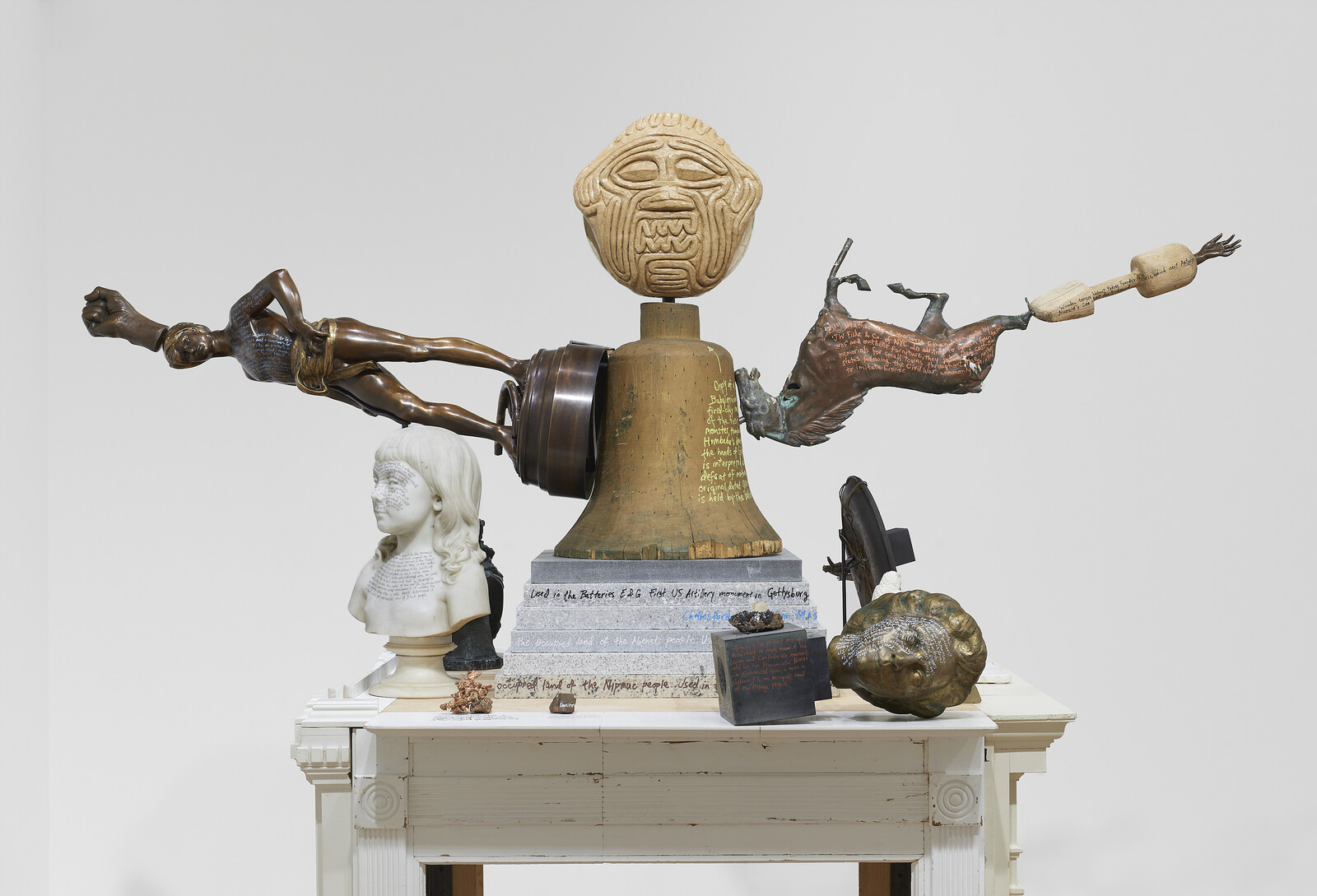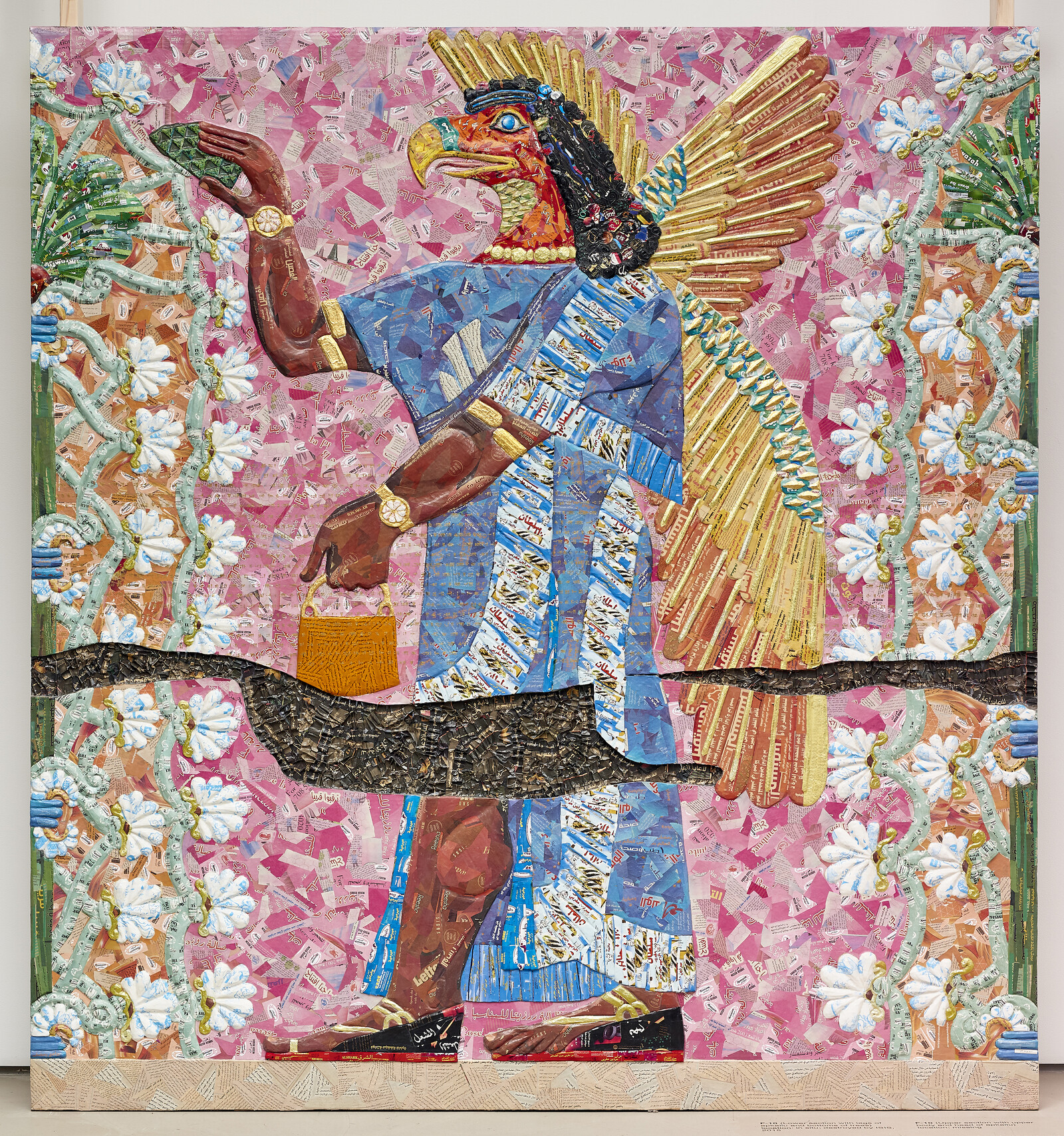Categories
Subjects
Authors
Artists
Venues
Locations
Calendar
Filter
Done
October 5, 2023 – Review
Michael Rakowitz’s “The Monument, the Monster, and the Maquette”
Rachel Valinsky

The exhibition’s title, alliteration and all, has the ring of an Aesopian fable. The Latin etymology of monument, Michael Rakowitz spells out on the edges of a sculpture, are trifold: caution (to remind, to advise, to warn), protest (demonstrate, remonstrate), monstrosity (monster). And indeed, around the gallery, the monstrous is everywhere in sight. Its forms are many: to the right, Behemoth (all works 2022), a colossal black plastic tarp obscuring the suggestion of an equestrian figure below rises tall only to fall to the ground as the fan powering its ascent clocks out. At the center, American Golem, poised on a decorative white wooden tabletop, an assemblage of found antiques and papier mâché sculptures (a strategy the artist has previously used for reproducing objects looted from Iraqi museums, highlighting the calls for their repatriation). The central figure, which stands on a stack of marble slabs, greets the viewer from the top of its bell-mold body and fired-clay mask—a copy of the Babylonian monster Humbaba. Gazing out at the viewer, its composite arms outstretched, it recalls Paul Klee’s Angelus Novus (1920), but even more grotesque. It doesn’t just stand on the wreckage of the past, propelled toward the future: it is …
February 4, 2020 – Review
Michael Rakowitz’s “The invisible enemy should not exist (Room F, section 1, Northwest Palace of Nimrud)”
Alan Gilbert

The world has experienced immense changes since the turn of the millennium, including the spread of neo-fascism, a deepening of the climate crisis, and advances in digital technologies. Yet one situation has remained consistent throughout that time: infernal war across the Middle East. Whether in Afghanistan, Iraq, Syria, or Yemen, the devastation these countries have experienced remains almost unfathomable to those living in the West. For much of this time, Iraqi-American artist Michael Rakowitz has addressed the repercussions of these conflicts through a cross-cultural artistic practice rooted in processes of translation across mediums, disciplines, and national borders. At the same time, Rakowitz aims to engage with a history of the Middle East that expands far beyond the prevailing narratives of war and insurrection.
In an exhibition entitled “The invisible enemy should not exist” at New York’s Lombard-Freid Projects in 2007, Rakowitz used everyday materials from the Middle East, such as food packaging, newspapers, and cardboard, to make replicas of some of the nearly 7,000 cultural artifacts plundered from the National Museum of Iraq in Baghdad following the disastrous US invasion in 2003. Versions of small statues, friezes, cups, vases, and more from ancient Mesopotamia were displayed in rows on wooden …